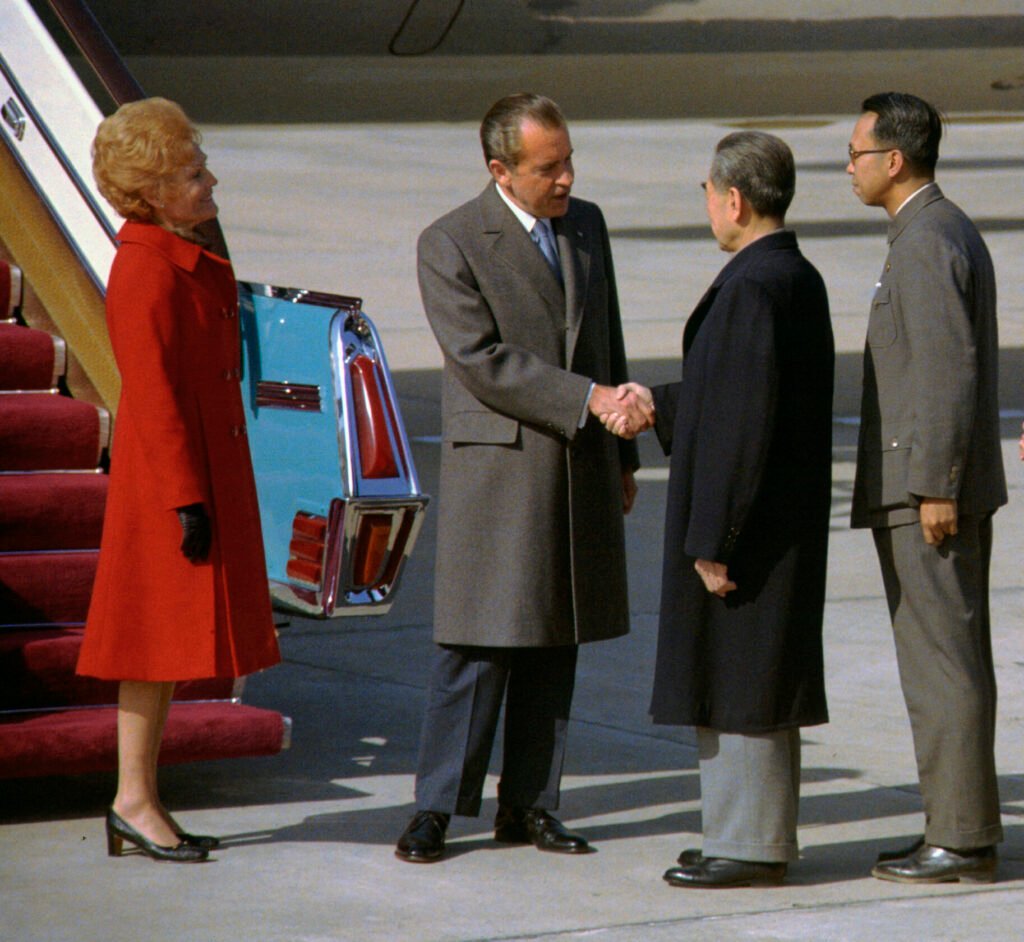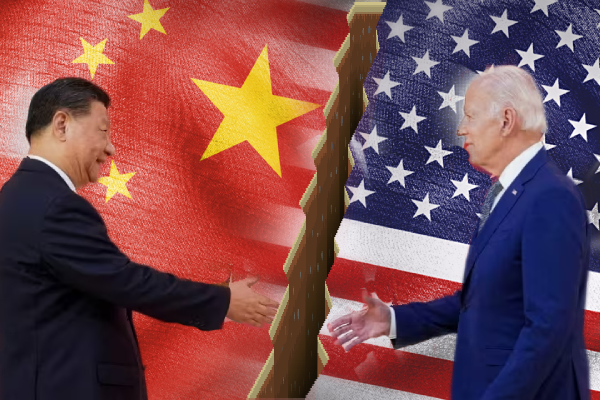US-China relations have experienced a challenging phase over the past decade, marked by persistent disagreements and disputes. Key contentious issues include matters concerning Taiwan, disputes in the South China Sea, sanctions on Chinese companies, spy flights and balloons, among others.
The strained relationship between these two global powers has raised concerns on various fronts. The United States and China are well aware of the importance of restoring stability to their relationship, prompting both nations to take steps towards rapprochement.
Efforts to improve relations have included a visit by US Secretary of State Anthony Blinken to China in June of this year, as well as the recent visit by Chinese Foreign Minister Wang Yi to the United States
Table of Contents
Historical Context
The diplomatic isolation of China came to an end in 1972 when then-US President Richard Nixon visited the People’s Republic of China (PRC), a pivotal event that reshaped the global political landscape. This marked the conclusion of a 25-year period of isolation for China, which had been primarily driven by the deteriorating relationship between China and the Soviet Union.
During this transformative period, the United States played a significant role in assisting China in building its economy and modernizing its society. Much of what we see in China today can be attributed to the support and collaboration with the United States. This fact was underscored when Henry Kissinger, the former National Security Advisor to President Nixon, made a notable visit to China, receiving a warm reception. Chinese President Xi Jinping referred to him as an ‘old friend’ and discussed the challenges in Sino-American relations.
China’s emergence as a global power, second only to the USA, was an unforeseen development. Initially, this was marked by economic competition, but it gradually evolved into political rivalry, particularly regarding issues related to Taiwan and the South China Sea.
The turning point in recent history was when former US President Donald Trump initiated a trade war with China by imposing heavy tariffs on Chinese imports and implementing bans on various Chinese products.

Rapprochement: A New Start
The term ‘rapprochement’ refers to the reestablishment or normalization of relations between two parties or countries after a period of hostility, tensions, or estrangement.
In June 2023, US Secretary of State Anthony Blinken visited China, where he met with Wang Yi and Chinese President Xi Jinping. During their meeting, Xi emphasized that ‘state-to-state interaction should always be based on mutual respect and sincerity.’
This meeting between the Chinese President and Blinken signifies a significant step toward normalizing relations between the two countries.
In October 2023, Chinese Foreign Minister Wang Yi visited the USA, where he held discussions with Anthony Blinken. He conveyed the message that the road to San Francisco (where the Asia Pacific Economic Cooperation (APEC) summit is scheduled to take place in November) might not be smooth. The context was a potential meeting between US President Joe Biden and Chinese President Xi Jinping on the sidelines of the Asia Pacific Summit.
Both the US and China share a common interest in avoiding conflict and maintaining stability. Given the global economic slowdown, the ongoing conflict in Russia-Ukraine, and the outbreak of a new conflict between Israel and Hamas in the Middle East, the USA is keen to avoid any form of confrontation with China.
China, on the other hand, is contending with an economic slowdown in its domestic market and the challenges in its real estate sector. Recently, China hosted the third Belt and Road Initiative summit to attract more countries to participate in its ambitious connectivity project. Consequently, China is motivated to project stability rather than creating chaos on the international stage.
In the pursuit of their respective interests, both the US and China are setting aside their differences and working towards maintaining peaceful relations with each other. This approach is not only beneficial for both nations but also in the interest of global stability, as these economic giants play a vital role in the world economy.
areas of cooperation
Climate Change
Climate change, which transcends boundaries, presents a colossal challenge to the world. To combat climate change and ensure a habitable planet for future generations, it is imperative that the USA and China collaborate to safeguard the environment.
The level of economic competition between these two nations has reached a point where environmental concerns, such as indications of climate change, have been somewhat overshadowed. Sustainable development presents a viable option for both countries to set an example for the world, given their abundant resources and capacity to lead in that direction.
Trade
Trade disputes between the two countries initially escalated during Donald Trump’s presidency, with substantial tariffs imposed on Chinese imports, bans on certain goods, and corresponding retaliatory measures by the Chinese side. This disruption in the supply chain management had significant repercussions.
However, over time, they have made considerable progress and are now engaged in constructive dialogues concerning trade and economic partnerships.
Health
The global COVID-19 pandemic has delivered a profound lesson to the world – to prevent future pandemics of this scale, it is essential that the international community collaborates in establishing mechanisms for the seamless dissemination of health-related information.
The global health sector has witnessed collaborative efforts in pandemic response and healthcare initiatives, showcasing a shared commitment to addressing common challenges.
Areas of tensions
Taiwan
Taiwan is one of the most contentious issues of this decade, and China is unlikely to change its stance on Taiwan. Xi Jinping has repeatedly emphasized that Taiwan is an integral part of China, and they are prepared to employ any means necessary to reunify Taiwan under Beijing’s administration, including the potential use of military force.
On the other hand, the United States has pledged support to Taiwan in the face of the Chinese threat. The U.S. frequently sends its naval ships through the Taiwan Strait as a deterrent to China
South China Sea
Tensions in the South China Sea stem from competing territorial claims among multiple nations, primarily China, Vietnam, the Philippines, Malaysia, and Taiwan. China’s assertive actions, including island-building and militarization, have heightened disputes. The region holds strategic importance due to its vast energy reserves and vital sea lanes.
Clashes over fishing rights, resource exploration, and sovereignty have escalated, leading to increased military presence and occasional confrontations.
International concerns about freedom of navigation, adherence to international law, and the potential for conflict persist, prompting the involvement of the United States and other nations in efforts to ease tensions and promote peaceful resolutions.
Future prospect: US-china relations
The future of U.S.-China relations hinges significantly on the upcoming American Presidential elections. The prospect of Donald Trump’s potential return to the White House cannot be dismissed. The policies of Donald Trump and Joe Biden diverge significantly; Biden appears to adopt a less confrontational approach towards China, while their positions are reversed when it comes to Russia.
Both nations face numerous challenges, and the key to addressing them lies in fostering mutual respect and pursuing long-term goals, which can only be achieved through cooperation.
Read my Blog on “Qatar: Tiny, Rich and Mediator”, by clicking on word Qatar
